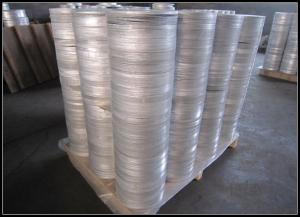Aluminum foil, a thin and versatile material, has become an indispensable part of our daily lives, especially in the kitchen. It’s not just about wrapping leftovers or lining baking sheets; aluminum foil plays a significant role in food safety and sanitation. Let’s dive into the world of aluminum foil and explore its uses, benefits, and even some creative ways to incorporate it into your cooking routine.
The Multifaceted Role of Aluminum Foil
Protecting Our Food
Aluminum foil acts as a barrier against external contaminants, preserving the freshness and taste of our food. It’s a simple yet effective way to maintain food safety. Whether you’re storing leftovers or wrapping a sandwich for lunch, foil provides a protective layer that keeps your food clean and uncontaminated.
Cooking Made Easy
From baking to grilling, aluminum foil simplifies the cooking process. It’s a popular choice for wrapping foods like potatoes or fish, allowing them to cook evenly and retain their moisture. The non-stick nature of aluminum foil makes clean-up a breeze, adding to the joy of cooking.
Enhancing Flavors
Did you know that aluminum foil can actually enhance the flavors of your dishes? By sealing in the natural juices and aromas, it helps to create a more intense and mouth-watering taste. This is particularly useful when preparing meats or vegetables, where the flavors can be amplified through the cooking process.
A Sanitary Solution
In the realm of food sanitation, aluminum foil is a champion. It’s resistant to bacteria and other microorganisms, ensuring that your food stays clean and safe to eat. This is especially important when preparing food for large gatherings or when you need to transport food to another location.
The Environmental Impact
While aluminum foil has its benefits, it’s also essential to consider its environmental impact. The production of aluminum foil consumes energy and resources, and improper disposal can contribute to waste. However, aluminum is a recyclable material, and when disposed of correctly, it can be repurposed and reused.
Reducing, Reusing, Recycling
To minimize the environmental footprint of aluminum foil, it’s crucial to practice the three R’s: Reduce, Reuse, and Recycle. Opt for reusable alternatives when possible, and when using foil, try to use only what you need. Always clean and recycle your aluminum foil to give it a new life.
Creative Uses of Aluminum Foil
Aluminum foil isn’t just for the kitchen; it has many creative uses that can surprise you. Here are a few ideas to get your creative juices flowing:
DIY Food Art
Use aluminum foil to create edible art. Shape it into decorative food holders or even as a mold for making unique ice cream shapes.
Crafting and Art Projects
Beyond the kitchen, aluminum foil can be used in various crafting projects. It’s a versatile material that can be molded, cut, and shaped into countless creations.
Home Improvement Hacks
Aluminum foil can be a handy tool for home improvement. Use it to fill gaps, protect surfaces from paint, or even as a temporary fix for small leaks.
The Bottom Line
Aluminum foil is more than just a kitchen staple; it’s a multifunctional tool that enhances our cooking experience and food safety. By understanding its uses and being mindful of its environmental impact, we can enjoy the benefits of aluminum foil while also taking steps to protect our planet. So, the next time you reach for that roll of foil, remember the many ways it can make your life easier and more delicious.

